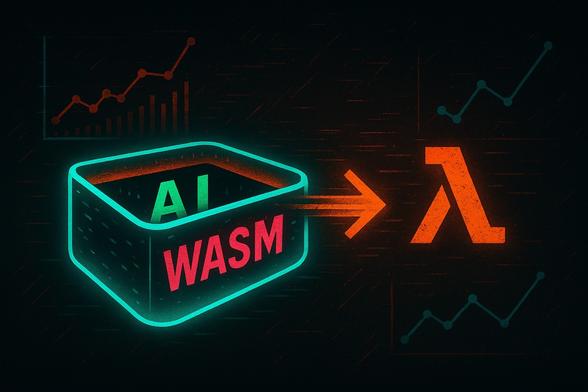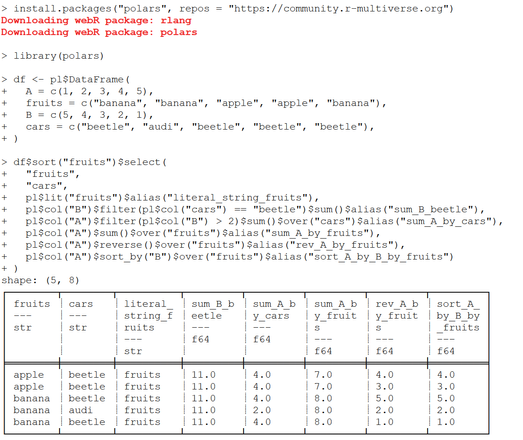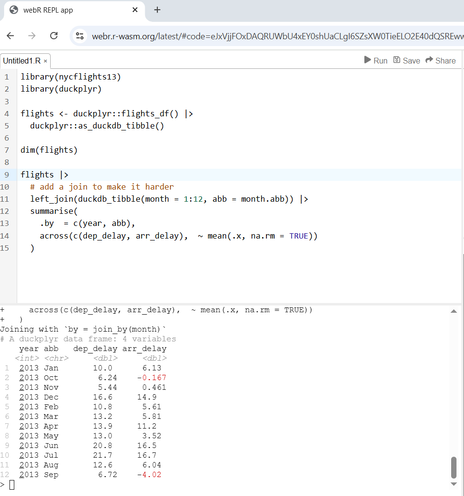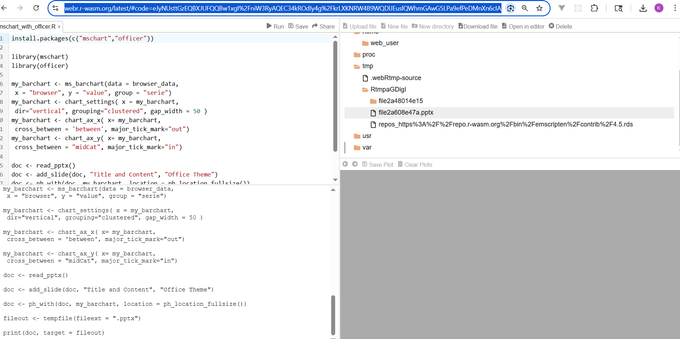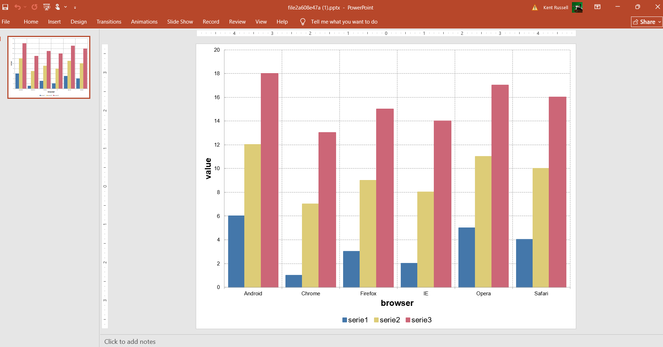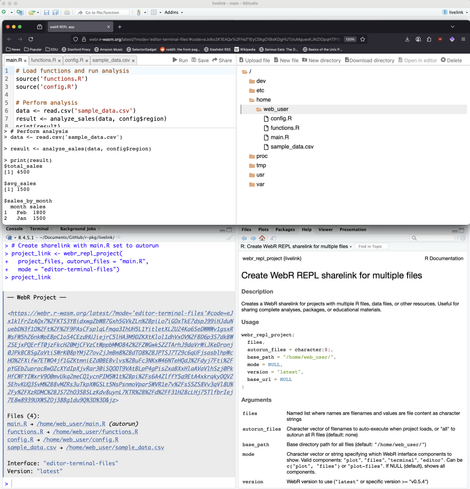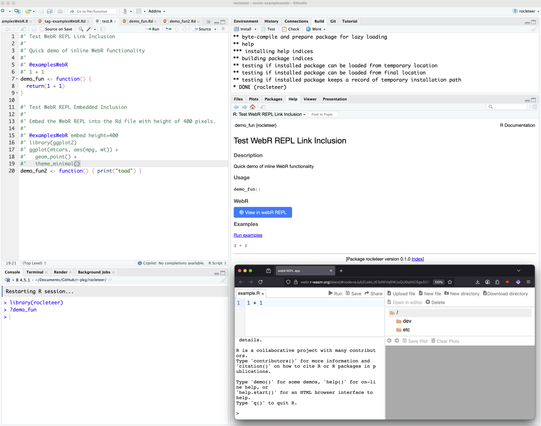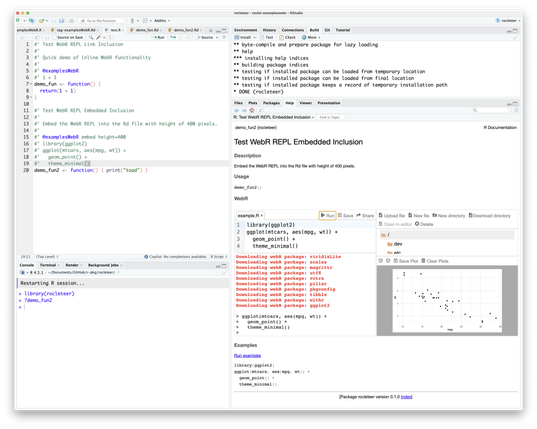Where should you run LLM-generated code to ensure it's both safe and scalable? And why did we move from a cool in-browser WebAssembly approach to boring, yet reliable, cloud computing?
Our AI chart generator taught us that running R in the browser with WebR, while promising, created practical issues with user experience and our development workflow. Moving the code execution to AWS Lambda proved to be a more robust solution.
https://quesma.com/blog-detail/sandboxing-ai-generated-code-why-we-moved-from-webr-to-aws-lambda
I have just completed the release of the polars package for #rstats, which we have rewritten over the course of a year.
https://github.com/pola-rs/r-polars/releases/tag/v1.0.0
It can be installed instantly from R-multiverse (even on #webr !).
Step 1: Write R code
Step 2: Share it
Step 3: Spend 2 hours helping someone install R and troubleshoot their environment
OR
Step 1: Write R code
Step 2: webR sharelink
Step 3: Profit ✨
What is this? An R editor for ants?
@examplesWebR now goes full-screen because your data viz deserves better than a cramped iframe!
Click "Full-width" → no more squinting
Try it: https://rd.thecoatlessprofessor.com/webr-in-pkgdown/reference/residual_surrealism.html
Shoutout to @gws for another webR REPL update:
1. Shared code now auto-runs when you click links (by adding &a parameter to end of code=)
2. Choose your view: editor, plot, terminal, or files with ?mode='editor-plot'
Experimenting with `@examplesWebR` - a new #roxygen2 tag that makes #rstats package examples interactive!
Instead of static code blocks, users get "View in webR REPL" buttons that open examples in their browser or the embedded webR REPL. No R installation needed!
Still WIP (🚧 ) since the main challenge is distributing dev packages for #webR (non-CRAN versions).
Would love input on the best approach! Here or:


